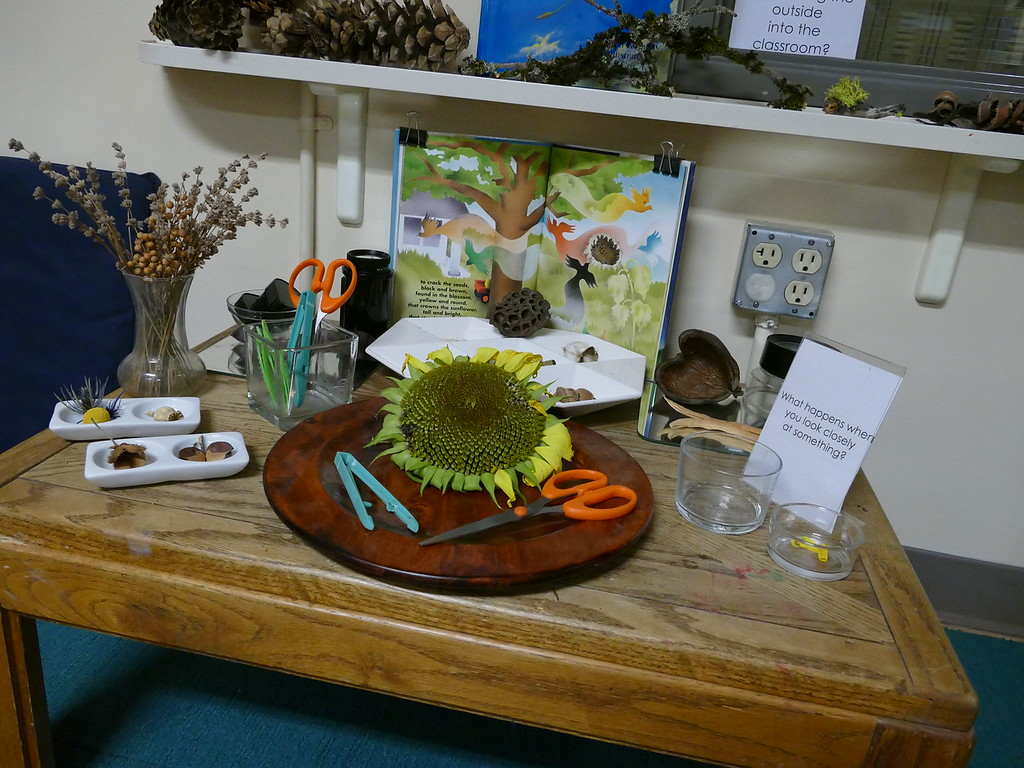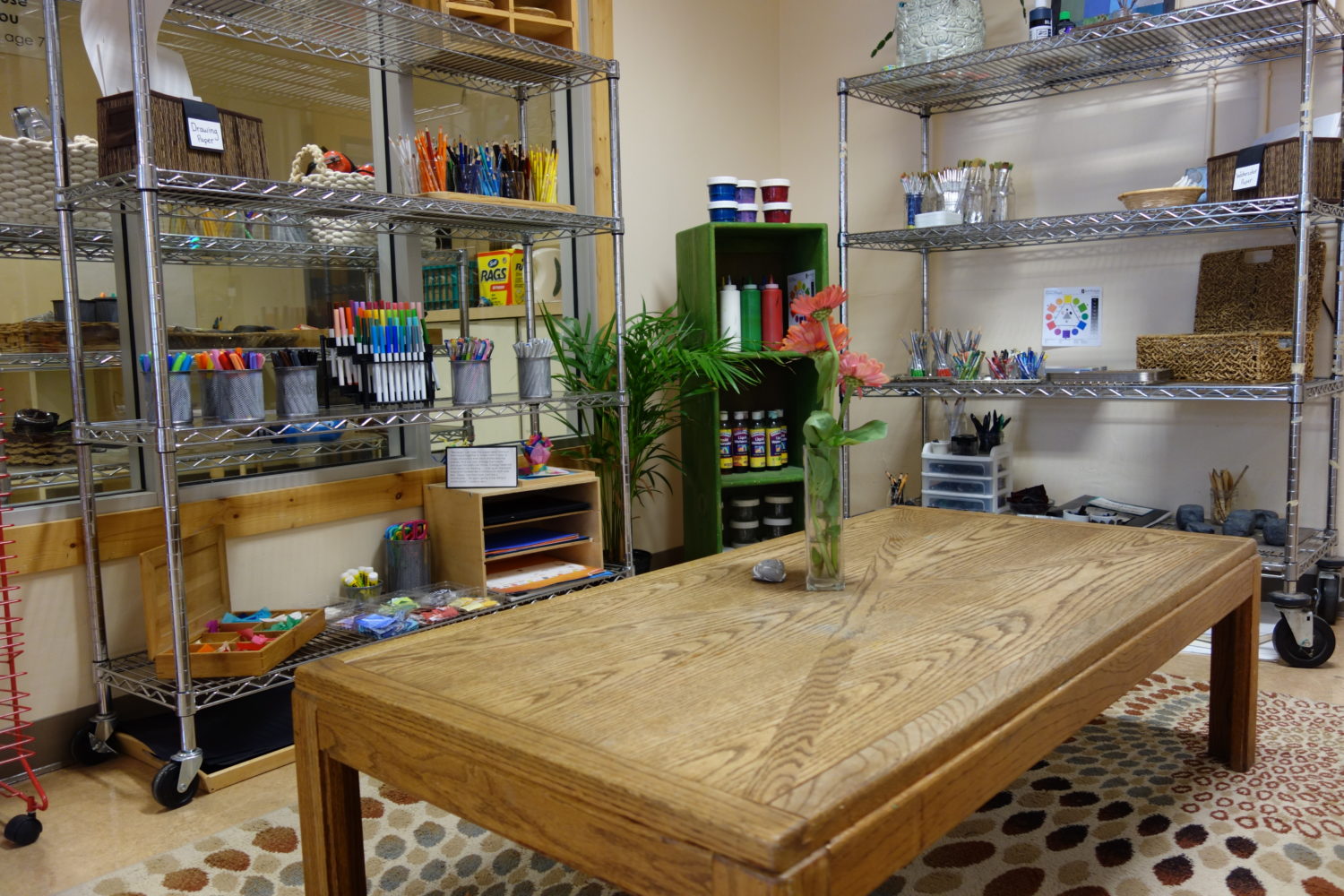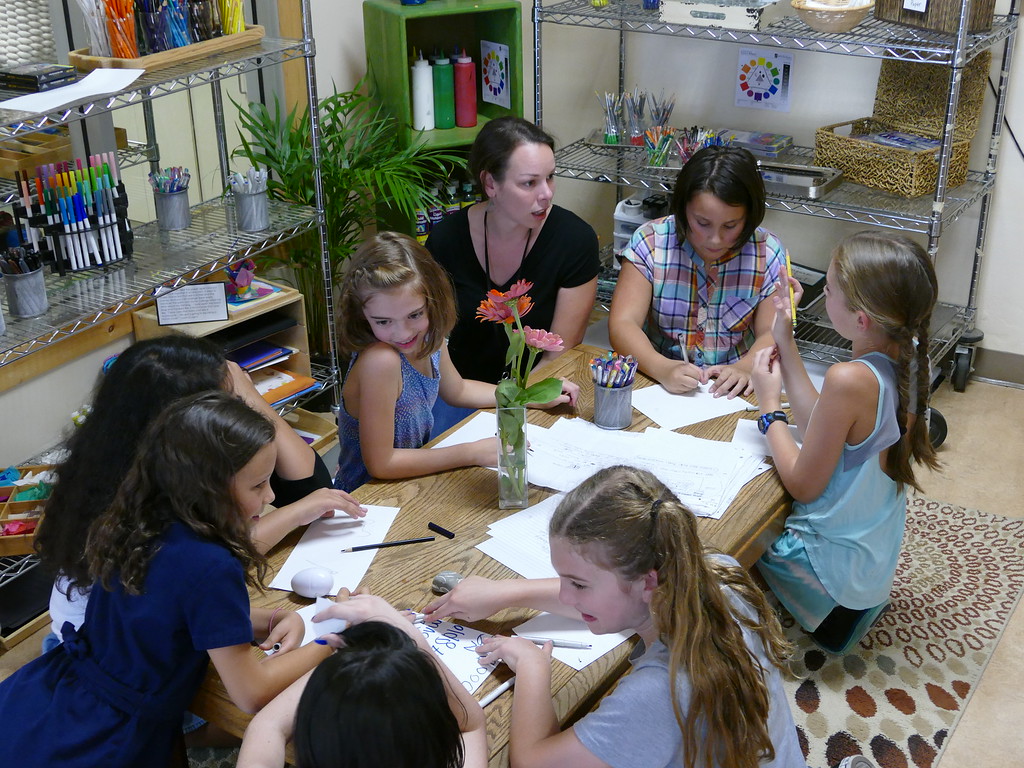Not just a pretty space

At the beginning of the school year, before the children arrive, all of us teachers at Opal School spend a lot of time thinking about what kind of environments we want to create. We are guided by our questions. These include:
What do we hope this environment communicates to children and about children? To adults and about adults?
How can our spaces support daily routines and schedules while staying open to spontaneity?
How will we make children’s thinking visible?
How do we support the need for large and small group work?
Where can we create cozy corners and space for large gatherings?
What materials will be available? How can the materials be organized, accessible, and aesthetically pleasing?
How can our classrooms have the richness and complexity of an ancient forest?

As I was walking around looking at the beautiful classroom environments before the first day of school, I found myself thinking about the children who would soon be inhabiting these spaces. While the spaces I was viewing definitely looked “Pinterest-worthy,” it’s really what happens once the children are here that will give us the information we need to determine whether the physical spaces are supporting our values. Will these environments communicate to the children that they play a central role in their own learning? Will they know from the very first moments they walk through the door that it is their stories, and memories, and voices, and ideas, that all of the work we’ll do together depends on?
As I was looking through images from the first day of school, I came across this one. I was struck by the evidence of a specific Opal School value in action: A belief that children play a central role in their own learning and that learning is central to the health of our democracy.

When I see this image, here’s what I notice:
- There is no defined seating at the table. This kind of flexible seating seems to suggest an open invitation for many people to gather, to scoot in close. It communicates that there’s plenty of room for you to find a space.
- The materials in the space are at eye-level and accessible. Although the table doesn’t seem to have materials previously set up, the accessibility of the materials around it communicates they are available to use at any time.
- The materials are open-ended. To me, this communicates there is no one specific or defined way to use them, but instead invites the use of materials as tools for thinking and sharing ideas.
- Everyone has some kind of paper in front of them: a place to make your mark, record your thinking, and share.
- The table is low to the ground, which seems to invite everyone (children and adults) to be on the same level, looking each other in the eye, bodies turned toward one another and leaning in.
These observations help me develop stories and pictures in my mind of what that value looks like in action. I see the children playing a central role in their own learning because I see evidence of conversation and connection. I believe learning is socially constructed, so images like this one indicate to me that the environment isn’t just something beautiful to look at but is serving the values I hold.
Reader, I’m wondering:
What are you thinking about as you set up your environments for a new learning community?
What values do you hold that you are trying to communicate through the environment?
What evidence do you see that the environment is serving those values?

Your questions about what the children are doing and thinking are always so insightful. There is a lot thought into these questions. Thank you. Great article for first weeks of school. Director of The Sunflower School in Orangeville Ontario.
Thanks for leaving your comment, Heather. Glad to hear we’re connecting to big questions in Orangeville!
Thank you Kerry, this will be food for thought at Untitled No. 1 this week!